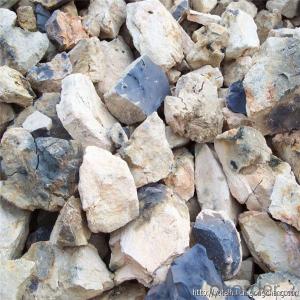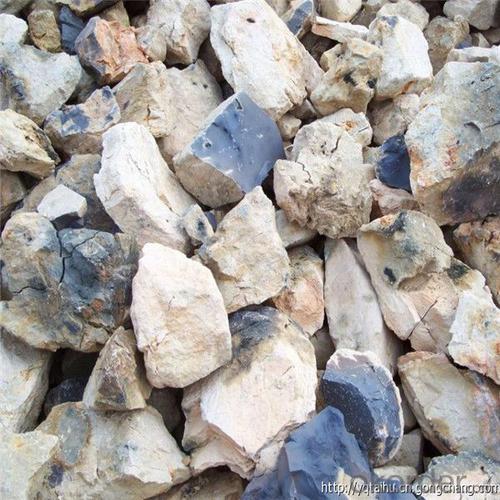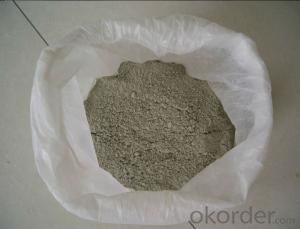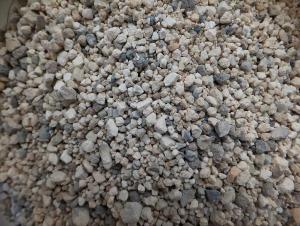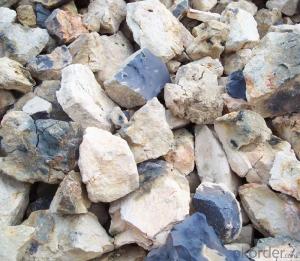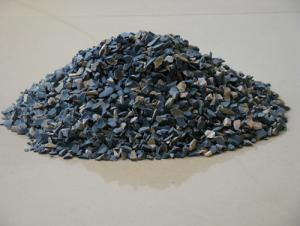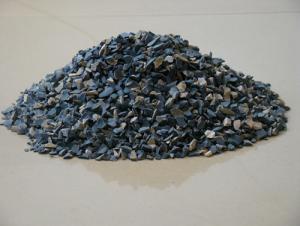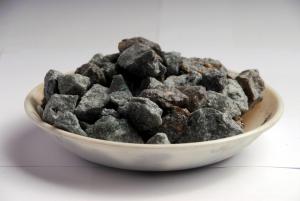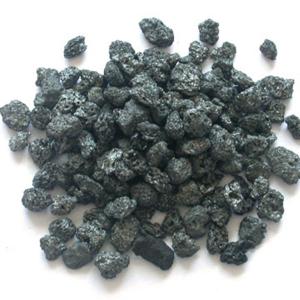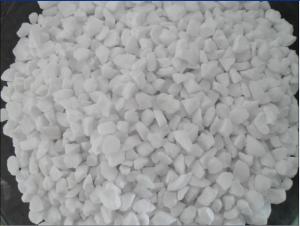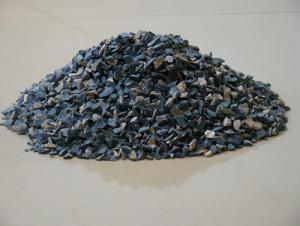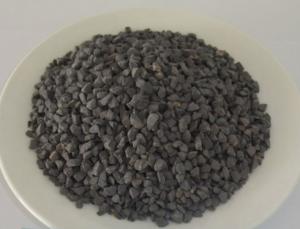High Al2O3 Content Bauxite Rotary Kiln Raw Materials for Refractory
- Loading Port:
- China Main Port
- Payment Terms:
- TT OR LC
- Min Order Qty:
- -
- Supply Capability:
- -
OKorder Service Pledge
OKorder Financial Service
You Might Also Like
Specification of Calcined Bauxite
Item | Al2O3 (min) | Fe2O3 (max) | TiO2 (max) | SiO2 (max) | KO2+NaO2 (min) | CaO+MgO (min) | Bulk Density(g/cm3) |
70 | 70% | 2.5% |
|
|
|
| 2.9min |
75 | 75% | 3.0% | 4.0% | 8% | 0.3% | 0.6% | 2.7min |
80 | 80% | 3.0% | 4.0% | 8% | 0.3% | 0.6% | 2.8min |
85 | 85% | 2% | 4.0% | 8% | 0.3% | 0.6% | 3.0min |
86 | 86% | 2% | 4.0% | 8% | 0.3% | 0.6% | 3.2min |
87 | 87% | 2% | 4.0% | 7% | 0.3% | 0.6% | 3.2min |
88 | 88% | 1.8% | 4.0% | 7% | 0.25% | 0.6% | 3.25min |
90 | 90% | 1.8% | 4.0% | 7% | 0.25% | 0.6% | 3.25min |
In 1MT jumbo bag or as the buyer request.
We ship the cargo in 20' GP containers,each container loads 25MT/20bags.
Application of Calcined Bauxite
1.aluminium industry
2.precision casting
3 refractory materials
4.aluminum silicate refractory fiber for fiber blanket, refractory brick .
5. refractory cement
Bauxite is an aluminium ore and is the main source of aluminium.
Bauxite is used in cement, chemicals, face makeup, soda cans, dishwashers, siding for houses.
- Q: What is the common inorganic fireproof and thermal inuslation matertial?
- 1. The thermal insulation material of level A combustion performance: Rock wool, glass wool, foam glass, foamed ceramics, foam cement, hole-closed perlite, etc. 2. combustion performance is level B1 insulation materials: Extruded polystyrene board (XPS) after special treatment / Special treatment of polyurethane (PU), phenolic aldehyde and gelatine powder polyphenyl granule 3 combustion performance is level B2 insulation material: Molded polystyrene board (EPS), extruded polystyrene board (XPS), polyurethane (PU), polyethylene (PE), sea capacity module and vitrified micro bead. (Hope I can help you! Hope you adopt. Thank you! )
- Q: What are unshaped fire-resisitance materials?
- Refractory castable, refractory plastic material, usually classified according to construction and manufacture method, unfired bricks precast block, refractory pressed into material, refractory cast material, refractory coating, refractory ramming material there are many classification methods
- Q: How can refractory material of the electric furnace be used for longer.
- Do not exceed the temperature, do not exceed the limits of use in order to achieve the best performance and the longest service life
- Q: What is the strength of high strength refractory material?
- With the help of high temperature and load, refractory material deforma to a certain degree of temperature from the beginning of deformation (load softening point), known as high temperature structural strength or high load softening temperature. It is a the ability to resist deformation ih high temperature and load at the same time. The nature of the high temperature is very improtant for selection of a furnace building materials under the effect of high temperature and force.
- Q: What kinds of refractory will be used in kiln of sintering ceramics?
- High alumina brick, clay brick, insulating brick and silicon carbide plate.
- Q: How many types of special refractories are there?
- Metal ceramics, high temperature coatings, high temperature fiber and other reinforced materials
- Q: Is there any difference between insulating bricks and refractory bricks? Are there any professional refractories factories that are reliable in the quality and quality of these irritated materials?
- High alumina brick, clay brick, brick and other high-quality refractory products, widely used in metallurgy, building materials (cement and glass), non-ferrous metal smelting, petroleum, chemical, electric power, machinery manufacturing and other industries.
- Q: what is the requirements of roofing insulation materials fire rating?
- The fireproofing requirements of architectural design are regulated by architectural design fire?safety?rules, roofing insulation material only has the requirements of materials combustion performance, namely non-combustible material. No fire rating requirements.
- Q: What are the new types of refractories? What are the characteristics? Their applications and developments?
- AZS refractories are often used brick, corundum brick, magnesia chrome brick, silicon carbide, silicon nitride bonded silicon carbide, nitrides, silicides, sulfide, boride, carbide and other non oxide refractory materials; calcium oxide, chromium oxide, alumina, Magnesium Oxide, beryllium and other refractory materials.Often used insulation refractories are diatomite products, asbestos products, insulation panels and so on.Unshaped refractory materials commonly used are fettling, refractory ramming material, refractory castable, refractory plastic material, refractory clay, refractory gunning, refractory cast material, fireproof coating, lightweight castable, mud etc..
- Q: Firing high temperature kiln of refractory and internal temperature being as high as 1600 ℃, metal heat exchanger can't use, how to do?
- 1>3>。 When metal heat exchanger is in 700 ℃, it must process high temperature protection, mixed cold wind or cold blast to protect heat exchanger. So this will waste a lot of energy; The comparison of high temperature resistant ceramic heat exchanger using temperature is 1350 ℃ to 1450 ℃; metal heat exchanger using temperature 700 ℃; heat utilization comparison of ceramic heat exchanger can be placed in 1350 ℃ or higher (highest available to 1450 ℃); the oxidation resistance, a very short time will burn out;2 >, waste heat recovery rate is high. Replacing the metal heat exchanger in high temperature and corrosion environment; Comparative ceramic heat exchanger can be used under the condition of 1350 ℃ for a long time. Let's make a comparison, if it is a refractory material industry. <, ceramic heat exchanger is simply won't appear, under the condition of equal to ceramic heat exchanger using, energy saving effect is best, can exchange for the high temperature. <. Ceramic heat can be placed on the nearest of exchanger flue outlet . <, and metal heat exchanger put in place contrast to the ceramic heat exchanger. In the process of using metal heat exchanger, if this situation happens, you can consider the ceramic heat exchanger. Temperature difference is between 650 ℃ to 750 ℃. If the metal heat exchanger is placed in normal place where ceramic heat usually put;The service life comparison: since ceramic heat exchanger with high temperature resistance, this partly replace metal heat exchanger. What's more, energy-saving rate is also different. Metal heat exchanger can be placed in 700 ℃ or less;4 >, corrosion resistance, its application effect is very different. So the metal-heat-exchanger's heat-resistant temperature is high and the service life is the countless times of metal heat exchanger. The place with highest temperature does not need high temperature protection.
Send your message to us
High Al2O3 Content Bauxite Rotary Kiln Raw Materials for Refractory
- Loading Port:
- China Main Port
- Payment Terms:
- TT OR LC
- Min Order Qty:
- -
- Supply Capability:
- -
OKorder Service Pledge
OKorder Financial Service
Similar products
Hot products
Hot Searches
Related keywords
